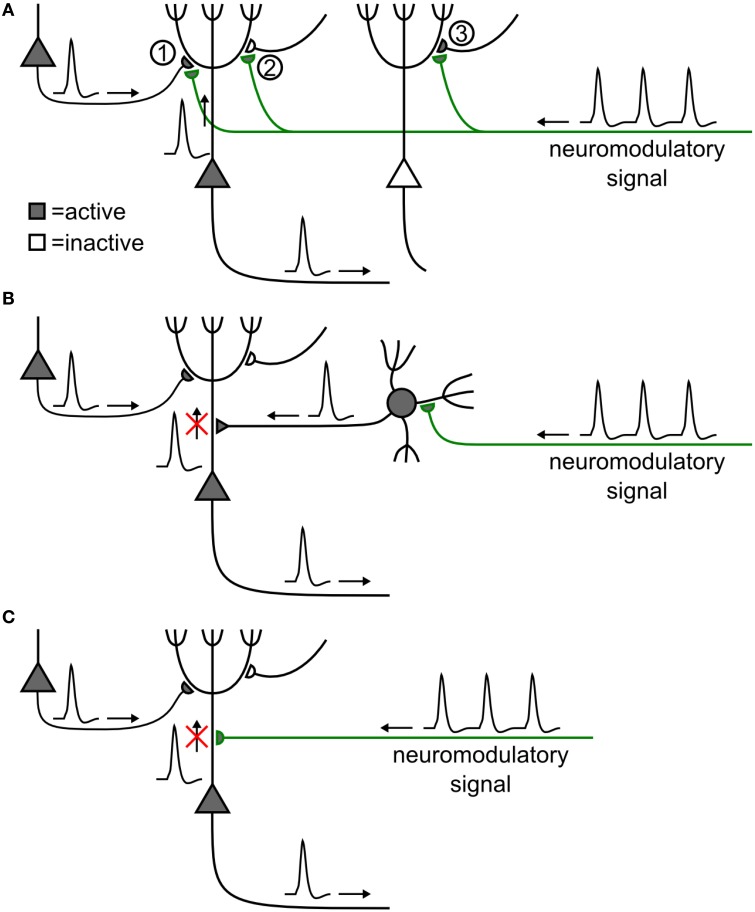Figure 2.
Possible mechanistic scenarios of neuromodulation of synaptic plasticity. (A) Direct synaptic effect (Goldman-Rakic et al., 1989). A synapse (1) between two excitatory pyramidal neurons (triangles) is strengthened by the coincident activity of its pre- and postsynaptic neurons, if neuromodulator is released. Plasticity is absent, weaker, or reversed, if the presynaptic (2) or the postsynaptic (3) neuron is silent (e.g., Schultz, 1998; Bailey et al., 2000). (B) Indirect effect of neuromodulation. Neuromodulator excites an inhibitory cell (filled circle), causing shunting inhibition on an excitatory neuron. This could prevent back-propagation of the action potential, thus blocking the induction of plasticity of a synapse, even though the presynaptic and postsynaptic neurons were active (e.g., Bissière et al., 2003). (C) Direct influence of neuromodulation on action potential back-propagation has a similar effect as in (B) (e.g., Sjöström et al., 2008).

